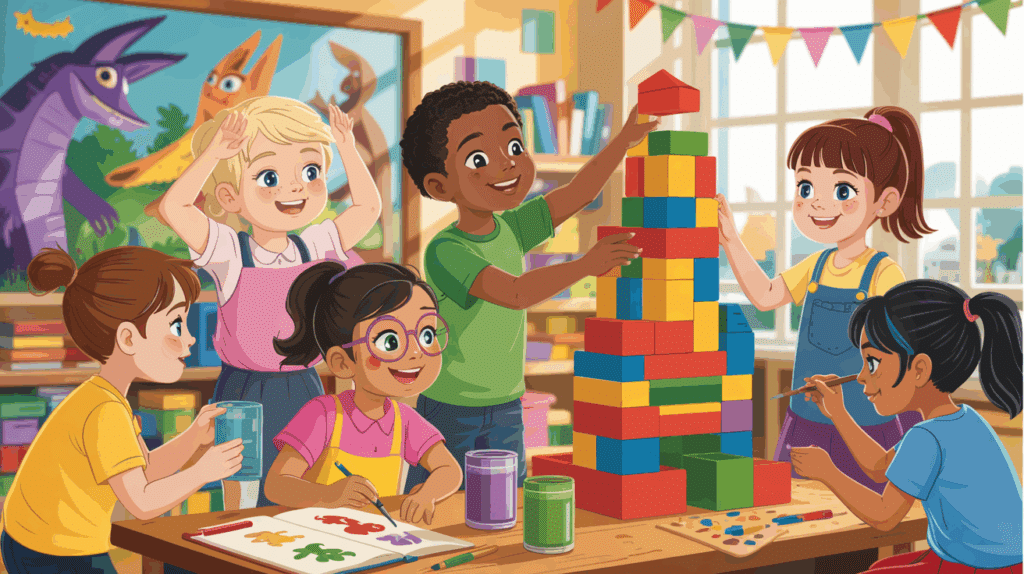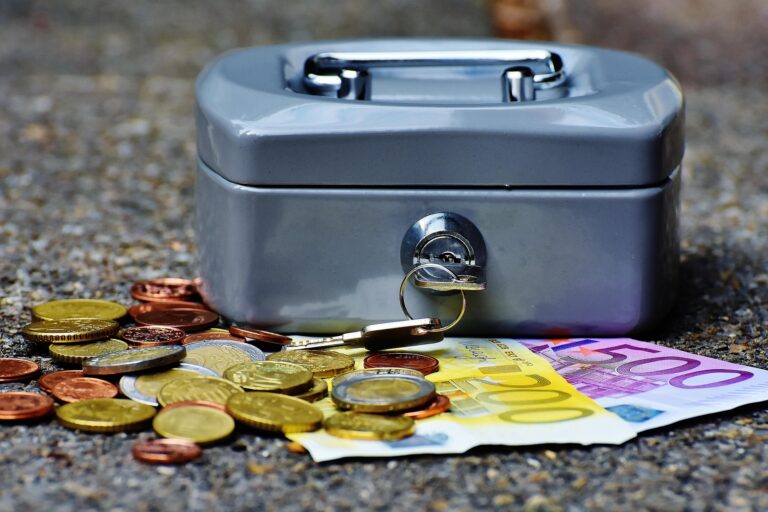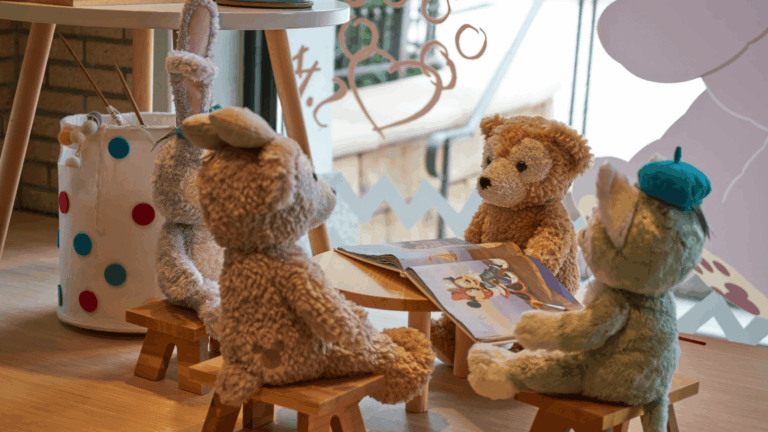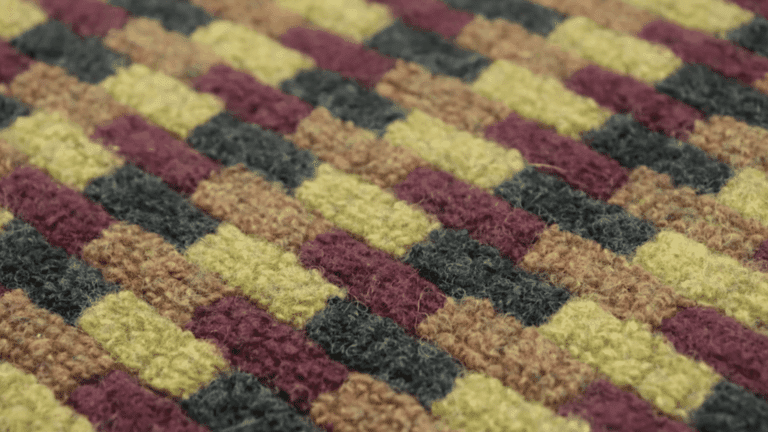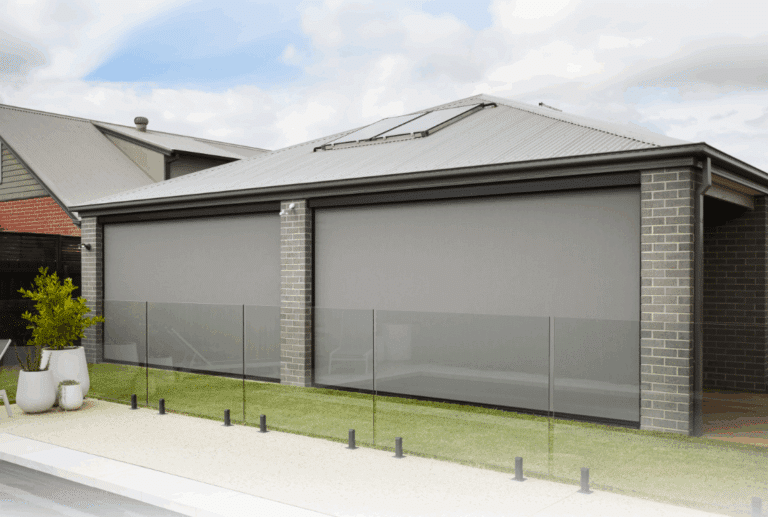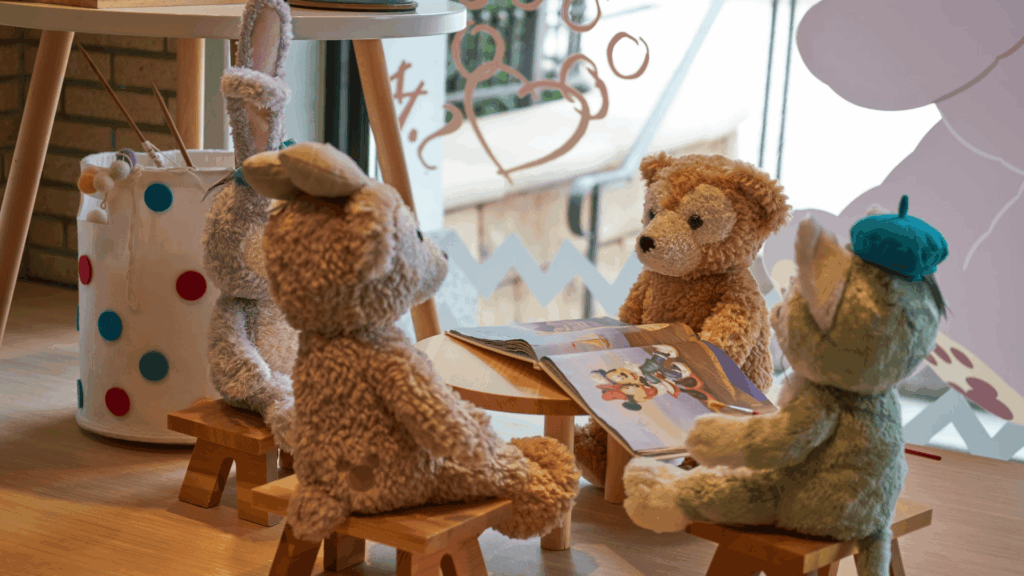Parents often worry when their children struggle to work with others. Many children find it challenging to share, take turns, or resolve problems in groups. This is a common concern for families.
Effective teamwork skills help children form strong friendships, succeed academically, and develop into well-adjusted adults. The good news is that these skills can be taught through fun group tasks at home.
This article presents simple teamwork activities for kids that build cooperation without special equipment or expert knowledge.
Readers will find out how to organize these teamwork activities for kids, which abilities they develop, and how to select ones that suit children of different ages and interests.
Why Teamwork Activities Are Essential for Kids Development
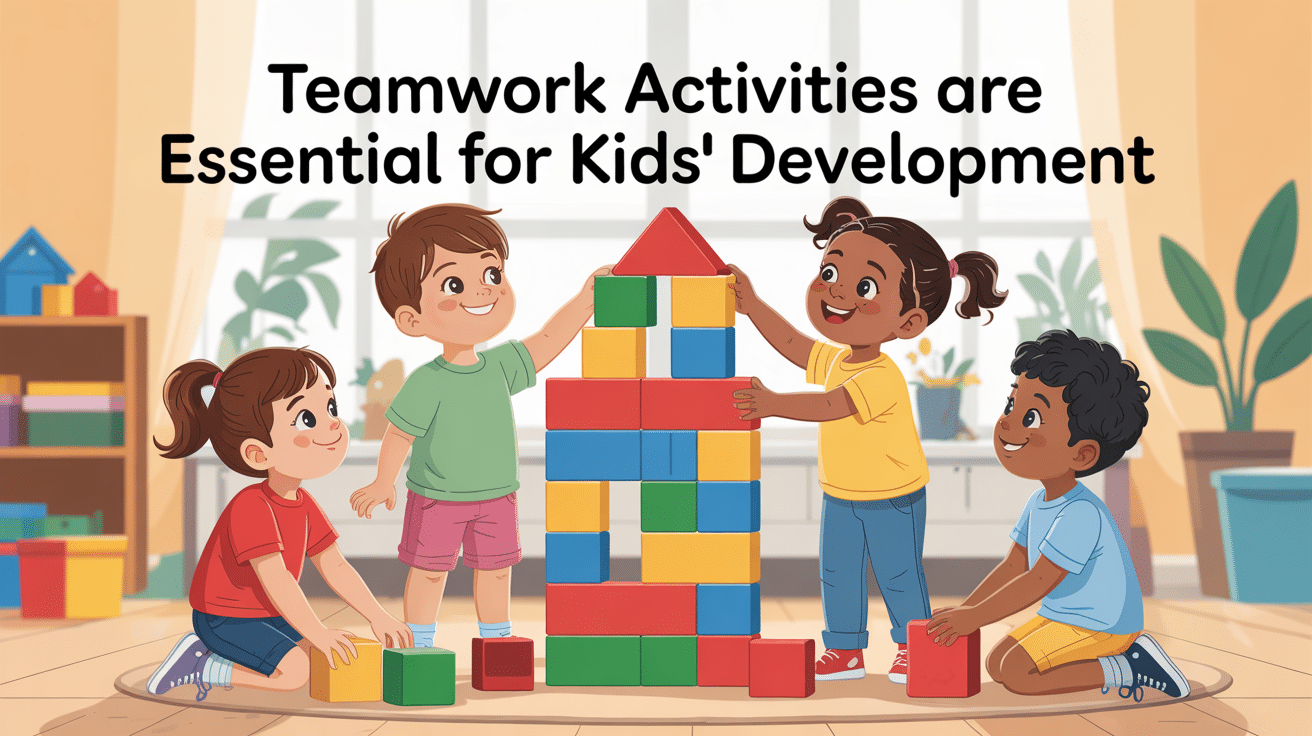
Teamwork activities are crucial for children’s growth and development. When kids work together, they learn to communicate effectively with one another. They also learn how to listen, share their ideas, and work together to solve problems.
These abilities help children in school and their daily lives.
Working in teams helps children develop trust in one another. They start to rely on their friends and feel supported. This makes them feel secure and helps them believe in themselves. When children feel linked to others, they are more content and ready to try new things.
Learning to handle these moments helps children become more patient and understanding. These lessons prepare kids for situations where they need to collaborate with others.
By doing teamwork, kids become better friends, classmates, and people in their communities.
Teamwork Activities for Kids That Build Lifelong Skills
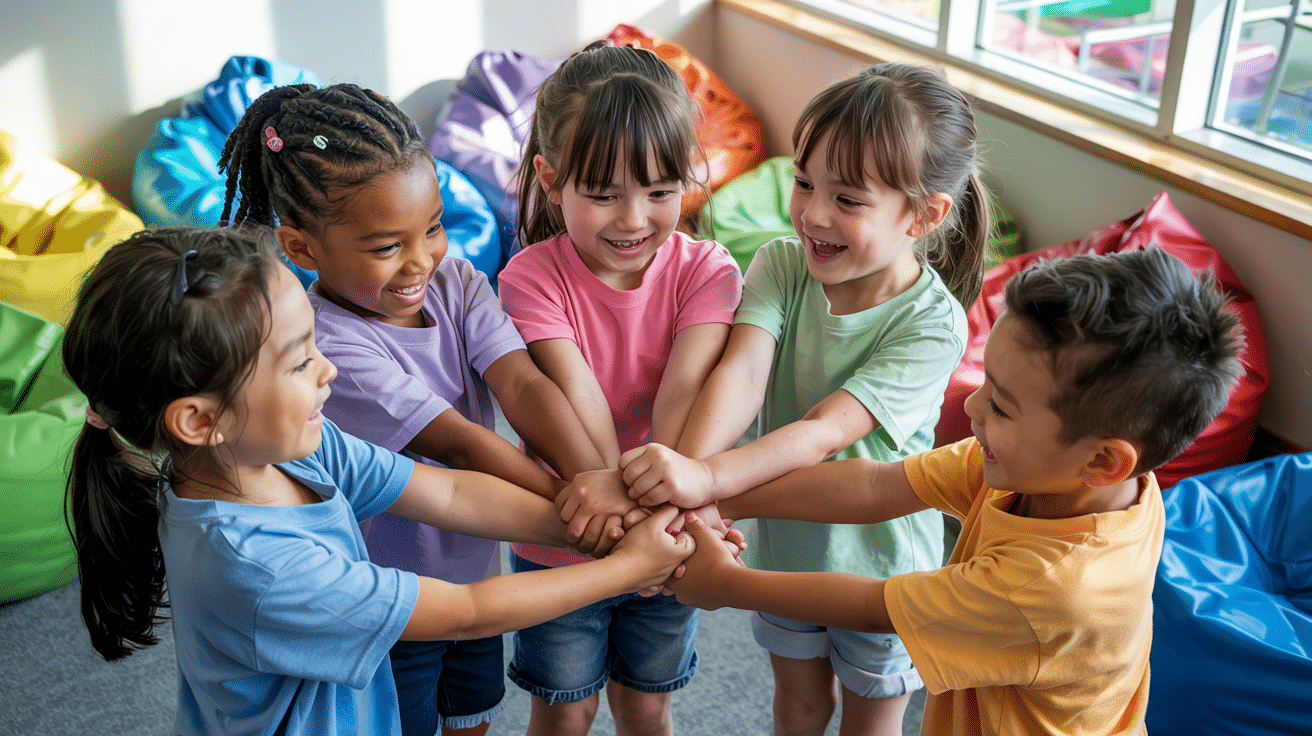
Children need to learn how to work together from an early age. When kids join forces on tasks, they develop important social skills that help them throughout life.
These skills include listening, sharing ideas, and collaborating to find solutions to problems as a team.
Let’s find some fun options that encourage kids to work together.
1. Human Knot
Kids stand in a circle and grab hands of two different people across from them. They must work together to untangle themselves without letting go.
Learning Outcome: Kids master the art of patience and spatial problem-solving while literally connecting with teammates.
- Boosts problem-solving under pressure
- Creates natural leaders and followers
- Teaches the value of clear, calm instructions
- Best for ages 7-12
2. Group Storytelling
Children sit in a circle and each adds a sentence to create a story. This builds listening skills and helps kids learn to build on others’ ideas.
Learning Outcome: Children learn to build on others’ ideas while developing their own creative voice.
- Ignites creative thinking beyond solo imagination
- Builds the confidence to share ideas
- Creates a sense of shared ownership in the story
- Best for ages 5-13
3. Blind Drawing
One child describes an object while another tries to draw it without seeing it. This improves giving clear instructions and listening carefully.
Learning Outcome: Kids find that words need precision and listeners need clarity to achieve goals together.
- Sharpens precise communication skills
- Teaches the importance of specific details
- Shows how different people interpret the same instructions
- Best for ages 6-12
4. Building Blocks Challenge
Groups work together to build a tower or structure using blocks. Kids learn to plan ahead and share materials.
Learning Outcome: Children develop planning skills and learn how individual contributions create something bigger than themselves.
- Reveals natural engineering talent
- Shows how teamwork creates stability
- Teaches the balance between speed and quality
- Best for ages 4-10
5. Scavenger Hunt
Teams follow clues to find hidden items. This promotes thinking through problems together and dividing tasks.
Learning Outcome: Kids learn that dividing tasks and sharing information leads to faster victories.
- Improves problem-solving in real-time
- Teaches resource allocation and planning
- Builds leadership and following skills
- Best for ages 6-14
6. Balloon Toss
Kids toss balloons in the air and try to keep them from touching the ground. They learn to work in sync.
Learning Outcome: Children develop physical teamwork skills and quick reactions while having non-stop fun.
- Develops hand-eye coordination and spatial awareness
- Builds quick reactions and adaptability
- Creates an exciting, high-energy team atmosphere
- Best for ages 4-10
7. Three-Legged Race
Partners tie their legs together and race against other pairs. This helps children learn to move as one unit.
Learning Outcome: Partners find how adjusting to others’ pace and style creates successful movement.
- Builds physical coordination and balance
- Develops timing skills and non-verbal communication
- Creates trust and mutual support between partners
- Best for ages 5-12
8. Egg Drop
Teams design a device to protect an egg from breaking when dropped. This requires creative thinking and testing ideas.
Learning Outcome: Teams learn that testing, failing, and improving designs together leads to innovative solutions.
- Introduces basic physics and material properties
- Encourages creative design and resourcefulness
- Teaches the scientific method through trial and error
- Best for ages 8-14
9. Blindfolded Maze
One child is blindfolded and guided through a maze by teammates using only verbal directions. This builds trust and communication.
Learning Outcome: Children experience the power of clear instructions and complete trust in teammates.
- Develops confidence in relying on others
- Improves giving precise, helpful directions
- Teaches careful listening and focus during chaos
- Best for ages 7-13
10. Team Painting
A group works together to create a painting on a large canvas. Kids learn to share space and combine ideas.
Learning Outcome: Kids find how personal expression can enhance rather than compete with others’ ideas.
- Builds creative collaboration and compromise
- Teaches space sharing and turn-taking
- Develops appreciation for different artistic styles
- Best for ages 4-15
11. Card Tower
Teams try to build the tallest tower using only playing cards. This activity teaches kids patience and careful handling.
Learning Outcome: Children learn about balance, stability, and careful movements while working toward a common goal.
- Teaches patience and steady hands
- Shows how small actions affect the whole team
- Develops focus and concentration skills
- Best for ages 7-12
12. Marshmallow Challenge
Teams build the tallest structure they can using spaghetti, tape, string, and a marshmallow on top.
Learning Outcome: Kids find that testing early and often leads to better designs than perfect planning.
- Introduces basic structural engineering concepts
- Encourages quick thinking and adaptation
- Teaches the value of testing ideas rapidly
- Best for ages 8-14
13. Water Relay
Teams fill a container with water using only sponges. Children learn to pass items quickly and carefully.
Learning Outcome: Children learn to minimize waste and maximize speed through coordination.
- Builds fast-paced teamwork skills
- Develops careful handling under pressure
- Creates excitement and healthy competition
- Best for ages 5-12
14. Board Games
Playing board games together teaches children to follow rules and take turns, fostering a sense of cooperation and mutual respect.
Learning Outcome: Kids learn that following shared rules creates fair and fun experiences for everyone.
- Teaches turn-taking and patience
- Develops strategic thinking
- Builds gracious winning and losing skills
- Best for ages 4-15
15. Red Light, Green Light
One person calls out “Red Light” or “Green Light,” and the others must stop or go accordingly.
Learning Outcome: Children develop listening skills and self-control in a fast-paced environment.
- Improves listening and reaction time
- Builds self-control and body awareness
- Teaches following directions under pressure
- Best for ages 3-10
16. Telephone Game
A message is whispered from person to person, and the last person says what they heard.
Learning Outcome: Children learn why clear communication is important and how easily information can be misinterpreted.
- Shows how messages change when passed along
- Builds listening and memory skills
- Creates awareness of communication challenges
- Best for ages 5-12
17. Paper Airplane Contest
Teams design and fly paper airplanes to see whose plane flies the farthest.
Learning Outcome: Children learn about aerodynamics and design testing through friendly competition.
- Introduces basic flight principles
- Encourages design improvements through testing
- Develops fine motor skills and patience
- Best for ages 6-13
18. Musical Chairs
Chairs are removed one by one as music plays, and children must find a chair when the music stops.
Learning Outcome: Children learn to stay alert and react quickly in changing situations.
- Develops awareness of surroundings
- Builds good-natured competition skills
- Teaches handling elimination with grace
- Best for ages 4-10
19. Freeze Dance
Children dance until the music stops, and then they must freeze in place.
Learning Outcome: Kids develop listening skills and physical control while having fun with music.
- Improves listening and reaction time
- Builds self-awareness and body control
- Encourages creative expression through movement
- Best for ages 3-10
20. Building a Bridge
Teams use limited materials to build a bridge that can hold weight.
Learning Outcome: Children learn structural principles and material strength through hands-on building.
- Introduces basic civil engineering concepts
- Teaches resource management and planning
- Develops testing and improvement cycles
- Best for ages 7-14
21. Solve a Riddle
Teams work together to solve a complex riddle or brain teaser.
Learning Outcome: Children combine different thinking styles to crack problems no one could solve alone.
- Develops logical reasoning and critical thinking
- Shows the value of different perspectives
- Builds persistence and mental stamina
- Best for ages 8-15
22. Create a Commercial
Teams write and perform a short commercial for a product.
Learning Outcome: Kids learn to craft persuasive messages and perform confidently as a unified group.
- Builds presentation skills and confidence
- Develops creative messaging abilities
- Teaches audience awareness and persuasion
- Best for ages 8-15
23. Design a Logo
Teams create a logo for an imaginary company or product.
Learning Outcome: Children learn how images can convey complex ideas and help create their identity.
- Develops visual communication skills
- Builds consensus through design choices
- Teaches symbolic thinking and brand identity
- Best for ages 7-14
24. Write a Play
Teams write and perform a short play.
Learning Outcome: Kids learn narrative development while assigning roles that match team members’ strengths.
- Builds creative writing and dialog skills
- Develops character creation and story arcs
- Teaches performance and stage presence
- Best for ages 8-15
25. Make a Time Capsule
Teams gather items to put in a time capsule.
Learning Outcome: Children think about what matters now and what will interest future generations.
- Develops historical thinking and perspective
- Builds consensus on what’s meaningful
- Creates conversation about values and memories
- Best for ages 6-14
26. Team Photography
Teams take photos based on a theme.
Learning Outcome: Children learn to express their ideas and feelings through carefully composed images.
- Develops visual composition skills
- Teaches planning and creative interpretation
- Builds consensus on subject and style choices
- Best for ages 7-15
27. Silent Line Up
The group lines up in order (by height, age, etc.) without talking.
Learning Outcome: Children find creative ways to communicate without words.
- Develops nonverbal communication skills
- Builds problem-solving without typical tools
- Creates awareness of body language and gestures
- Best for ages 6-14
28. Relay Races
Teams compete in running or other races.
Learning Outcome: Kids learn that their performance affects the entire team’s success.
- Builds physical coordination and speed
- Develops smooth handoffs and transitions
- Creates team spirit and mutual encouragement
- Best for ages 5-14
29. Hula Hoop Challenge
Kids pass a hula hoop around the circle without letting go of their hands.
Learning Outcome: Children learn to move their bodies in unusual ways while maintaining a sense of connection.
- Develops physical flexibility and coordination
- Builds patience and turn-taking
- Creates awareness of group movement
- Best for ages 6-12
30. Volunteering
Groups participate in community service together.
Learning Outcome: Children learn that teams can make a real difference in people’s lives.
- Develops empathy and social awareness
- Builds a sense of community responsibility
- Creates meaningful bonds through shared purpose
- Best for ages 6-17
31. Code Breaking
Teams work to decipher a coded message.
Learning Outcome: Children learn to spot systems and patterns while sharing insights with teammates.
- Builds logical thinking and pattern recognition
- Develops persistence with challenging problems
- Creates appreciation for different thinking styles
- Best for ages 8-15
32. Nature Walk Scavenger Hunt
Teams find specific items during a nature walk.
Learning Outcome: Kids learn observation skills while connecting with the natural world as a team.
- Develops keen observation and identification skills
- Builds appreciation for natural environments
- Creates an outdoor cooperation experience
- Best for ages 5-14
33. Campfire Stories
Teams create and share stories around a campfire.
Learning Outcome: Children learn the power of spoken storytelling in a memorable atmosphere.
- Develops public speaking confidence
- Builds creative storytelling skills
- Creates a sense of community and shared experience
- Best for ages 6-16
34. Create a Mural
Teams design and paint a mural on a large paper or canvas.
Learning Outcome: Kids learn to work across boundaries while creating something larger than themselves.
- Develops large-scale art planning
- Builds style coordination between artists
- Creates lasting visual reminders of teamwork
- Best for ages 6-15
35. Perform a Skit
Teams create and perform a short skit.
Learning Outcome: Children learn to plan, practice, and present as a coordinated group.
- Builds confidence in public performance
- Develops memorization and timing skills
- Creates comfort with improvisation
- Best for ages 7-15
36. Build a Robot
Teams use building blocks or other materials to build a robot.
Learning Outcome: Kids learn basic robotics concepts while sharing parts and tools.
- Introduces simple machines and mechanisms
- Develops three-dimensional thinking
- Creates interest in technology and engineering
- Best for ages 7-14
37. Design a Game
Teams create their own board game or card game.
Learning Outcome: Children learn what makes activities fun and fair for all players.
- Develops systems thinking and rule creation
- Builds testing and refinement skills
- Creates understanding of fairness and balance
- Best for ages 8-15
38. Solve a Mystery
Teams work together to solve a fictional mystery.
Learning Outcome: Kids learn to gather evidence and draw conclusions as a coordinated unit.
- Develops logical deduction skills
- Builds note-taking and information sharing
- Creates attention to detail and evidence
- Best for ages 8-14
39. Plan a Trip
Teams plan a mock trip, including itinerary and budget.
Learning Outcome: Children learn to make decisions and compromises about shared experiences.
- Develops practical planning skills
- Builds budget awareness and prioritization
- Creates geography knowledge and cultural interest
- Best for ages 8-15
40. Build a Miniature Golf Course
Teams create a mini golf course using household items.
Learning Outcome: Kids learn to build challenging but possible paths for players to locate.
- Develops spatial design skills
- Builds awareness of difficulty levels and fairness
- Creates testing and improvement cycles
- Best for ages 7-14
41. Design a Playground
Teams draw or build model playgrounds.
Learning Outcome: Children learn to design spaces that cater to diverse needs and preferences.
- Develops spatial planning and safety awareness
- Builds inclusive thinking for different ages and abilities
- Creates understanding of community needs
- Best for ages 7-15
42. Write a Song
Teams write lyrics and create a tune for a simple song.
Learning Outcome: Kids learn how words and music combine to express ideas and feelings.
- Develops lyric writing and rhythm skills
- Builds musical collaboration abilities
- Creates confidence in creative expression
- Best for ages 7-15
43. Team Juggling
Kids pass balls in a pattern without dropping them.
Learning Outcome: Children learn to maintain group rhythm and recover from mistakes smoothly.
- Develops hand-eye coordination and timing
- Builds quick reactions and focus
- Creates group rhythm and pattern recognition
- Best for ages 8-14
44. Passing the Balloon
Pass a balloon without using hands.
Learning Outcome: Kids learn creative ways to work with limitations and physical challenges.
- Develops body awareness and coordination
- Builds laughter and positive atmosphere
- Creates thinking outside normal boundaries
- Best for ages 5-12
45. Shrinking Classroom
The group fits inside a smaller and smaller space marked with tape.
Learning Outcome: Children learn how careful arrangement can solve seemingly impossible space problems.
- Develops spatial awareness and consideration
- Builds physical problem-solving skills
- Creates cooperation under unusual constraints
- Best for ages 6-12
46. Charades
Children act out words or phrases while their team guesses.
Learning Outcome: Kids learn that communication happens through more than just words.
- Develops nonverbal expression skills
- Builds quick thinking and adaptability
- Creates attention to subtle cues and signals
- Best for ages 7-15
47. Simon Says
One person gives instructions, and the others must follow only when “Simon Says” is said first.
Learning Outcome: Children learn to listen carefully and process commands under pressure.
- Develops careful listening and attention
- Builds self-control and impulse management
- Creates quick discrimination between similar cues
- Best for ages 4-10
48. Obstacle Course
Kids work together to complete a set of physical challenges.
Learning Outcome: Children learn to overcome barriers while supporting teammates.
- Develops physical confidence and coordination
- Builds encouragement and coaching skills
- Creates perseverance through challenges
- Best for ages 5-14
49. Puzzle Race
Teams race to finish a jigsaw puzzle.
Learning Outcome: Kids learn to sort, categorize, and build from separate pieces.
- Develops visual discrimination and sorting
- Builds division of labor and task management
- Creates focus and persistence
- Best for ages 5-14
50. Coin Transfer
Teams move coins from one bowl to another using only chopsticks.
Learning Outcome: Children develop precise movements and patient teamwork.
- Develops fine motor control and coordination
- Builds patience and concentration
- Creates steady nerves under pressure
- Best for ages 7-14
51. Organize a Fundraiser
Teams plan and execute a fundraiser for a cause.
Learning Outcome: Children learn to collaborate and make positive changes in their world.
- Develops planning and organizing skills
- Builds community awareness and empathy
- Creates confidence in making real-world impact
- Best for ages 9-17
52. Make a Movie
Teams write, film, and edit a short movie.
Learning Outcome: Children learn how various jobs work together to create a finished creative product.
- Develops storytelling and technical skills
- Builds role assignment and responsibility
- Creates understanding of production processes
- Best for ages 9-16
53. Blind Guide
Verbal directions from teammates guide one blindfolded child.
Learning Outcome: Kids learn the importance of clear instructions and complete trust.
- Develops verbal direction skills
- Builds trust and careful listening
- Creates confidence in helping and being helped
- Best for ages 7-14
54. Balloon Pop Race
Teams pop balloons in a race.
Learning Outcome: Children learn to combine speed with technique for fastest results.
- Develops quick reactions and motor skills
- Builds excitement and team energy
- Creates healthy competitive spirit
- Best for ages 5-12
55. Team Sports
Play games like soccer or basketball.
Learning Outcome: Kids learn position playing and coordinated effort toward scoring goals.
- Develops physical skills and fitness
- Builds position playing and role understanding
- Creates appreciation for different abilities
- Best for ages 5-17
56. Story Chain
Each person adds a sentence to create a group story.
Learning Outcome: Children learn to extend ideas while maintaining narrative consistency.
- Develops active listening and memory
- Builds narrative continuity skills
- Creates understanding of story structure
- Best for ages 6-14
57. Tug of War
Teams pull on a rope to try to pull the other team over a line.
Learning Outcome: Children learn that synchronized effort generates more power than individual effort.
- Develops coordination and timing
- Builds group strength and unity
- Creates an understanding of physics principles
- Best for ages 6-14
58. Minute to Win It Games
Teams compete to complete each challenge in under a minute.
Learning Outcome: Children learn to work efficiently when every second counts.
- Develops quick thinking and fast reactions
- Builds comfort with time pressure
- Creates excitement and focus
- Best for ages 6-15
59. Build a Raft
Teams use materials to build a raft that can float.
Learning Outcome: Kids learn about buoyancy and watercraft design through testing.
- Introduces the physics of floating and water resistance
- Builds structural design skills
- Creates testing and improvement cycles
- Best for ages 8-14
60. Construct a Kite
Teams build and fly a kite.
Learning Outcome: Children learn about aerodynamics and flight through hands-on creation.
- Introduces principles of flight and air movement
- Builds careful construction techniques
- Creates an outdoor testing experience
- Best for ages 7-14
61. Create a Website
Teams design a website on a given topic.
Learning Outcome: Kids learn to organize information in user-friendly digital formats.
- Develops information organization skills
- Builds visual and content planning
- Creates understanding of user experience
- Best for ages 9-16
62. Team Pentathlon
Teams compete in five different events, with scores combined.
Learning Outcome: Children learn how different strengths contribute to team success.
- Develops varied physical and mental skills
- Builds appreciation for diverse abilities
- Creates strategic resource allocation
- Best for ages 8-15
63. Cooking Challenge
Teams follow recipes to make a simple dish.
Learning Outcome: Children learn how following processes and sharing tasks can create tasty results.
- Develops the ability to measure and follow directions
- Builds food preparation skills
- Creates understanding of kitchen safety and hygiene
- Best for ages 6-15
Stay in Or Go Out: Indoor vs Outdoor Activities
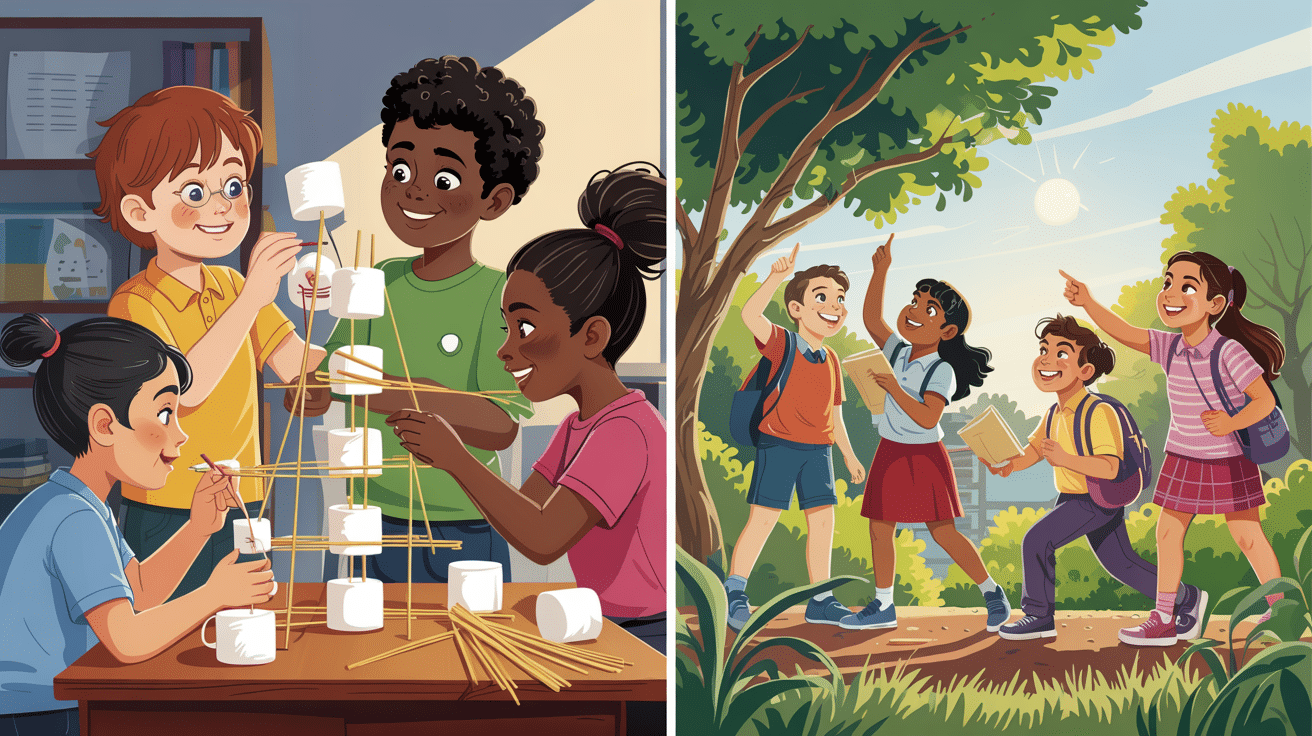
Choosing between staying home and going outside is a daily decision for many of us. Both options offer different benefits that fit various moods, budgets, and time limits.
Indoor activities provide comfort and control, while outdoor options connect us with nature and often involve more physical movement.
This quick comparison will help you pick what works best for your needs today.
| Indoor Activities | Outdoor Activities |
|---|---|
| Cost: Often cheaper, many free options like reading or cooking | Cost: Can be free (walking, hiking) or costly (skiing, golf) |
| Weather: Not affected by rain, snow, or heat | Weather: Dependent on good conditions |
| Social Aspect: Can be solo or with small groups | Social Aspect: Often more group-friendly |
| Health Benefits: Less movement unless planned | Health Benefits: Natural exercise, fresh air, sunshine |
| Variety: Limited by space, but many options exist | Variety: Wide range of options across different settings |
| Convenience: No travel needed, always accessible | Convenience: May require travel, planning |
| Learning: Good for focused skills like art, music | Learning: Hands-on with nature, sports skills |
| Mood Impact: Comfort and safety, but can feel limiting | Mood Impact: Often boosts mood with nature exposure |
Finishing It Up
Have you tried any of these teamwork activities for kids yet? From building towers with cards to creating murals together, these games help children develop skills that they’ll use throughout their lives.
Each activity teaches something different – communication, trust, problem-solving, or creativity – but they all share the goal of bringing kids together. When children work as a team, they learn that combined efforts often lead to better results than working alone.
So what’s next? Select an activity that aligns with your child’s age and interests. Start simple and see how they respond. You might be surprised at how quickly they develop new skills!
Why not share your experiences in the comments? We’d love to hear which teamwork activities your kids enjoyed most.


